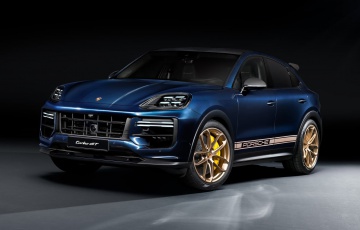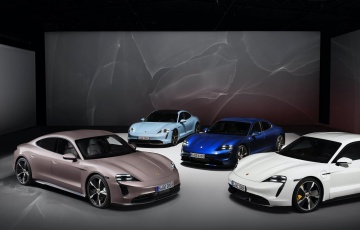Mercedes-AMG GT-R vs Porsche 911 GT3 RS vs BMW M4 GTS

The 911 GT3 RS has been the go-to track weapon. But a German civil war is brewing...
Were someone foolish enough to appoint me as some kind of advisor to the motor industry, there would be two basic tenets to the philosophy I would preach.
1. A good-looking bad car will always outsell an ugly good car.
2. Never try to beat the Porsche GT3 RS, because that way trouble lurks.
The reasoning behind the second point is quite simple: every time someone comes along and professes to have bettered Porsche’s road-cum-track missile they end up failing.
My warped imagination conjures an image of Porsche GT cars boss Andreas Preuninger channelling Ivan Drago’s evil trainer from Rocky IV: “It’s simple: whatever the RS challenges, it destroys!”
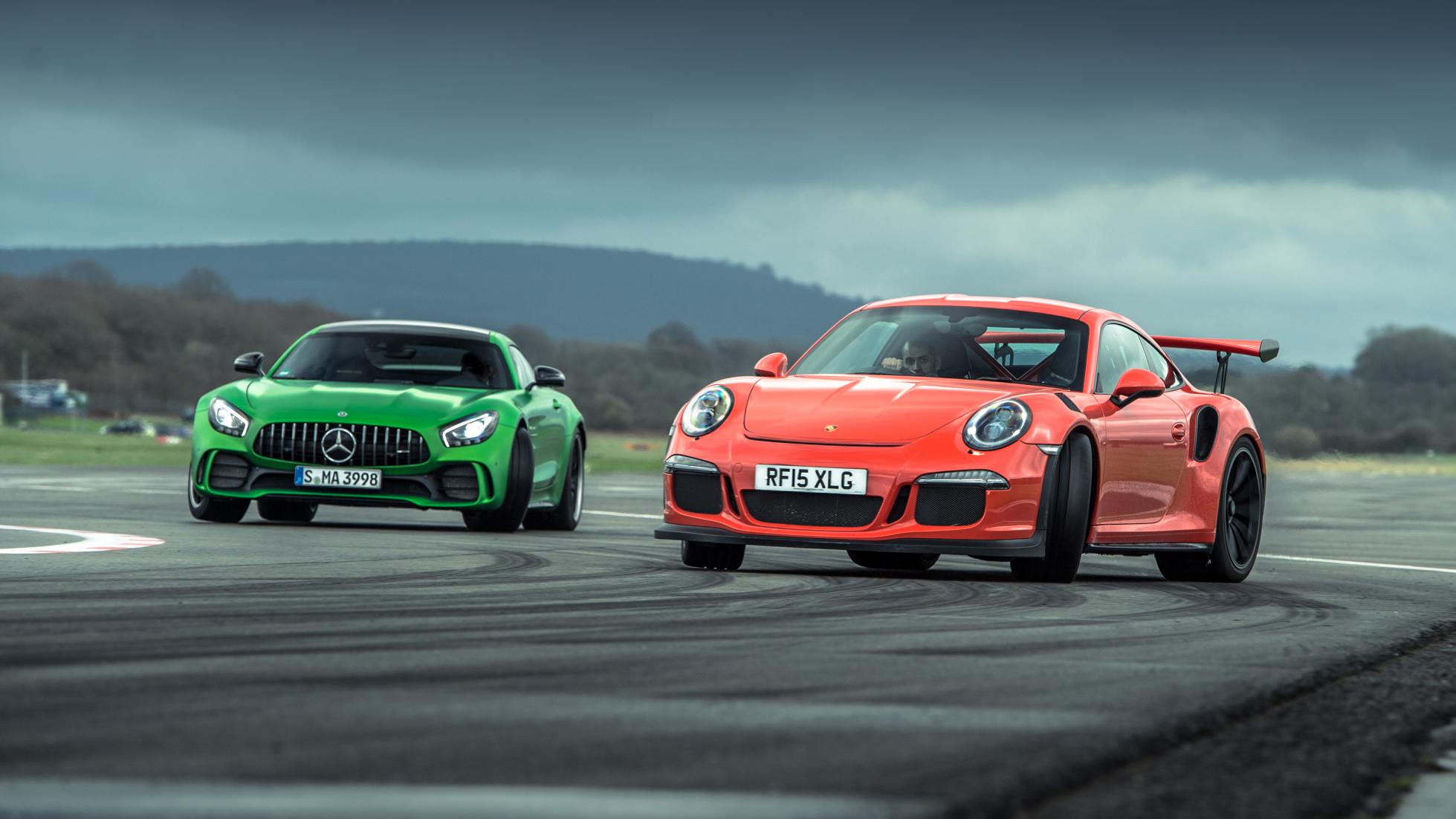
And it really does. Over the years they’ve all tried and been pummelled: BMW, Mercedes, Maserati, Audi – even Ferrari has never produced a machine that could match an RS’s mix of driver appeal, speed and stubborn durability.
At this point, I’d be tempted to introduce the Mercedes-AMG GT R with a note of inevitable disappointment. But even before I’d driven it, just one look at the list of modifications Mercedes has slapped onto its GT sportscar identifies this as the most serious challenger the Porsche has ever encountered. Remember when Drago’s torso was first unveiled? Gulp. And, yes, I’ll stop with the Rocky references now.
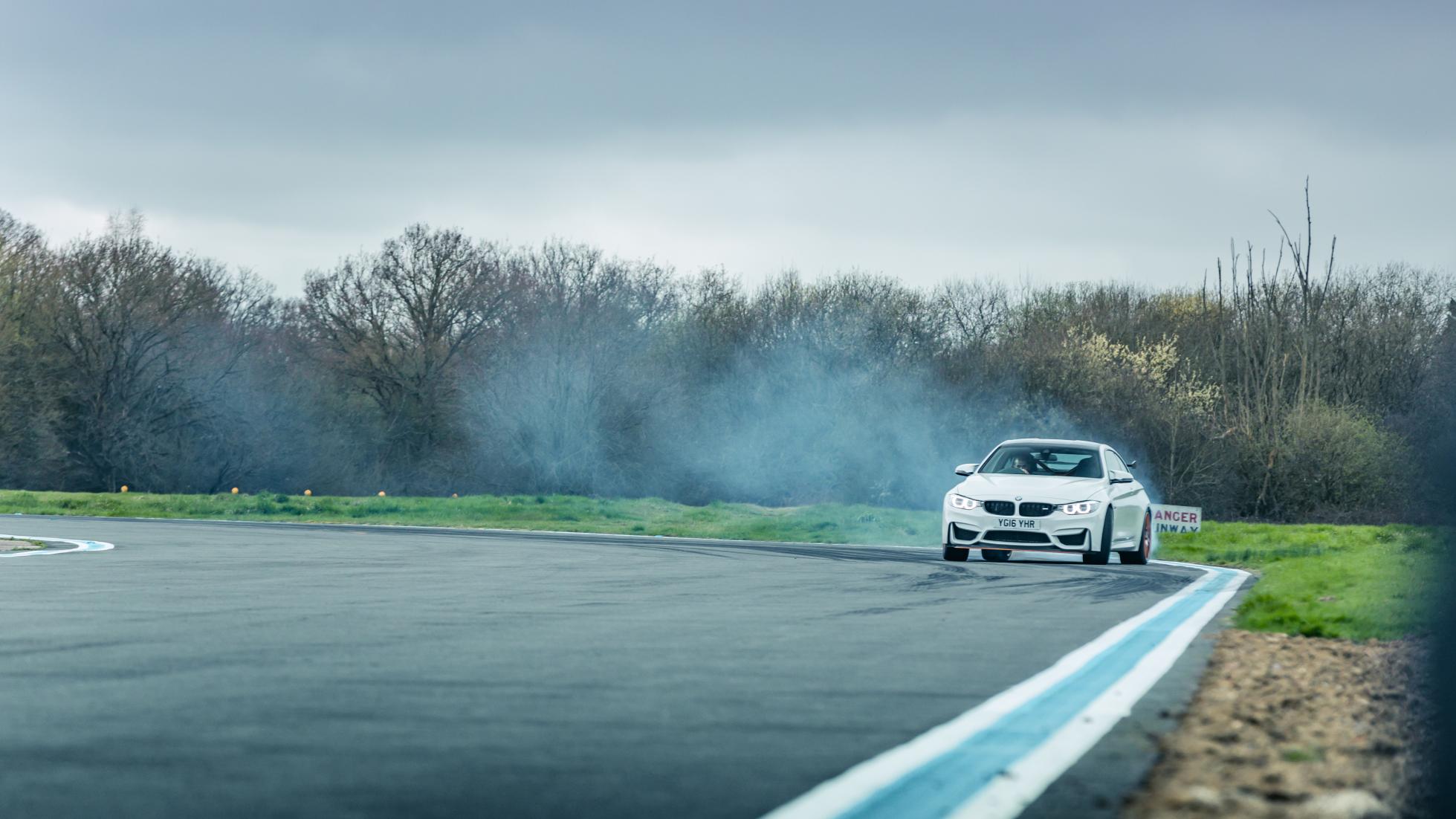
These are the expurgated highlights: 46mm wider front track, 57mm wider rear track. Active front aerodynamics, a massive rear wing, a carbon propshaft, three-way adjustable dampers, nine-stage traction control and Michelin Pilot Cup 2 tyres.
And Bernd Schneider. No, you don’t get him thrown in with the £143,245 price, but you do get his genius for the car’s set-up.
Power is now 577bhp and torque from the 4.0-litre twin-turbo V8 is 516lb ft. It weighs 1,555kg and has lapped the wiggly place in Germany in 7:10.
So, to recap. It is a small RWD coupe with a massive amount of power that has been subjected to a very comprehensive set of changes and then been to finishing school with some of the best drivers and engineers.
And it’s from the Stuttgart area, where we know the DNA is strong for drivers’ cars. The on-paper game is strong from AMG.
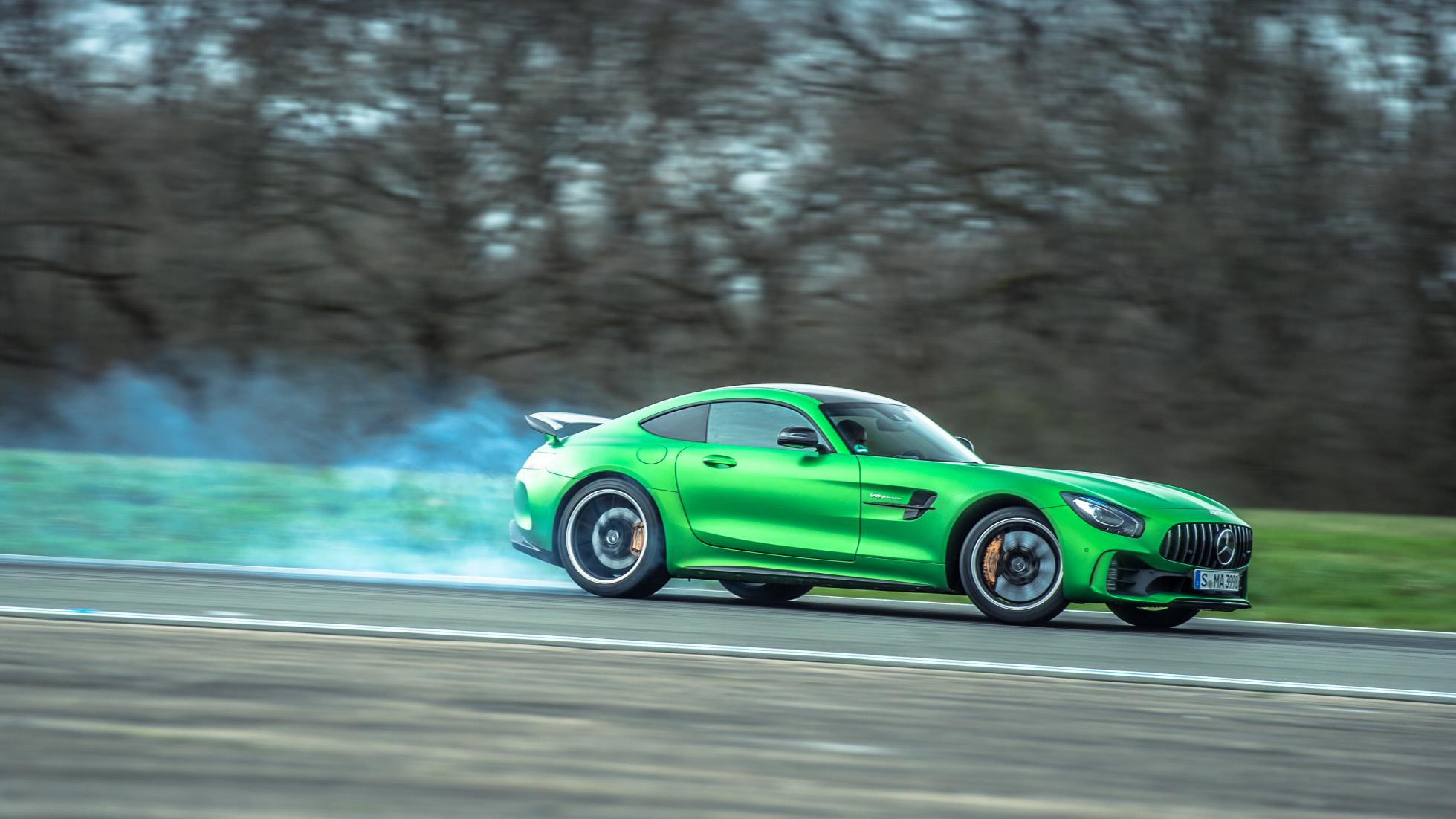
But the reality is even more eye-opening. It takes half a lap of any normal-sized racetrack to know you’re in something special, the GT R confirms as much even sooner. The steering is heavy and the direction changes are so, so crisp. It feels quite different to the standard car, and so it should because a quick check of the spec sheet afterwards shows that, just like the RS, it has rear steering.
The car feels taut and flat. Turn-in is absolutely superb (the front tyre is a 275/35) and then the grip just builds down the side of the car. It will understeer if you’re lazy with the throttle, but the torque delivery is so violent and the differential so tight that at pretty much any point you can move the slip angle to the rear axle. Or just do a skid.
But here’s the surprising bit. Until now, all very fast AMGs, even the ones supposedly optimised for track use, have been traction-limited thugs. Hugely enjoyable, yes, but lacking the breadth of ability to pound out accurate laps.
The GT R completely changes that. It’s effectively front-mid-engined, and the new spring/damper combination working with the sticky tyres have given it the kind of traction the basic S model can’t even dream of.
And this is the key to that car’s character: post-apex you find yourself issuing small corrective steering inputs as the rear just moves around and hunts for traction. It’s not scary – it’s actually beautifully controlled.
And you can lean on that fancy new traction-control system. Slacken it away from maximum assistance and it allows a fair degree of controlled slip – the intervention is so soft it does at times feel like an autonomous drift button.
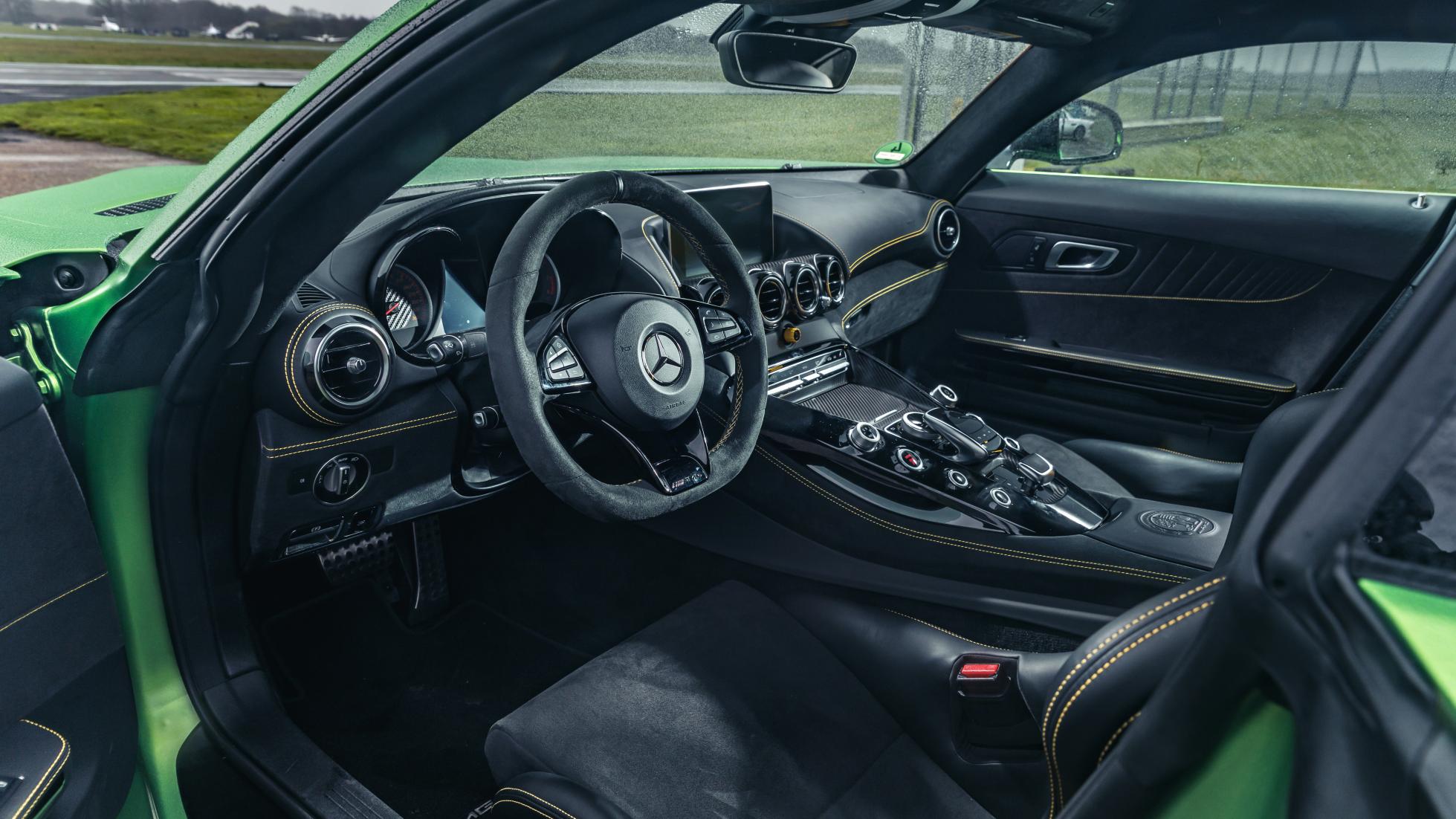
The ceramic brakes are immense, but you don’t concentrate on them because the motor fills your senses. With the DNA toggle in Race mode, the exhaust flaps are open and the thing blares and screams on any throttle opening, then snaps and bangs on the overrun. It’s an immense powertrain because the gearshift is so damn good both up and down the ’box. The GT R is the best AMG I’ve driven on track by a factor of 10.
The M4 GTS, sadly, comes nowhere close to matching it. I’ve never fully understood why this track-addict M4 fell so far short of expectations – actually that’s not the case. It didn’t feel 68hp faster than the standard car, traction was poor, grip not that impressive and it just wasn’t that exciting to drive.
I just don’t understand how BMW thought this was worth more than standard M4. And before I’m accused of bashing all turbocharged M cars, I’m one of the few genuine E80 M3/M4 advocates out there.
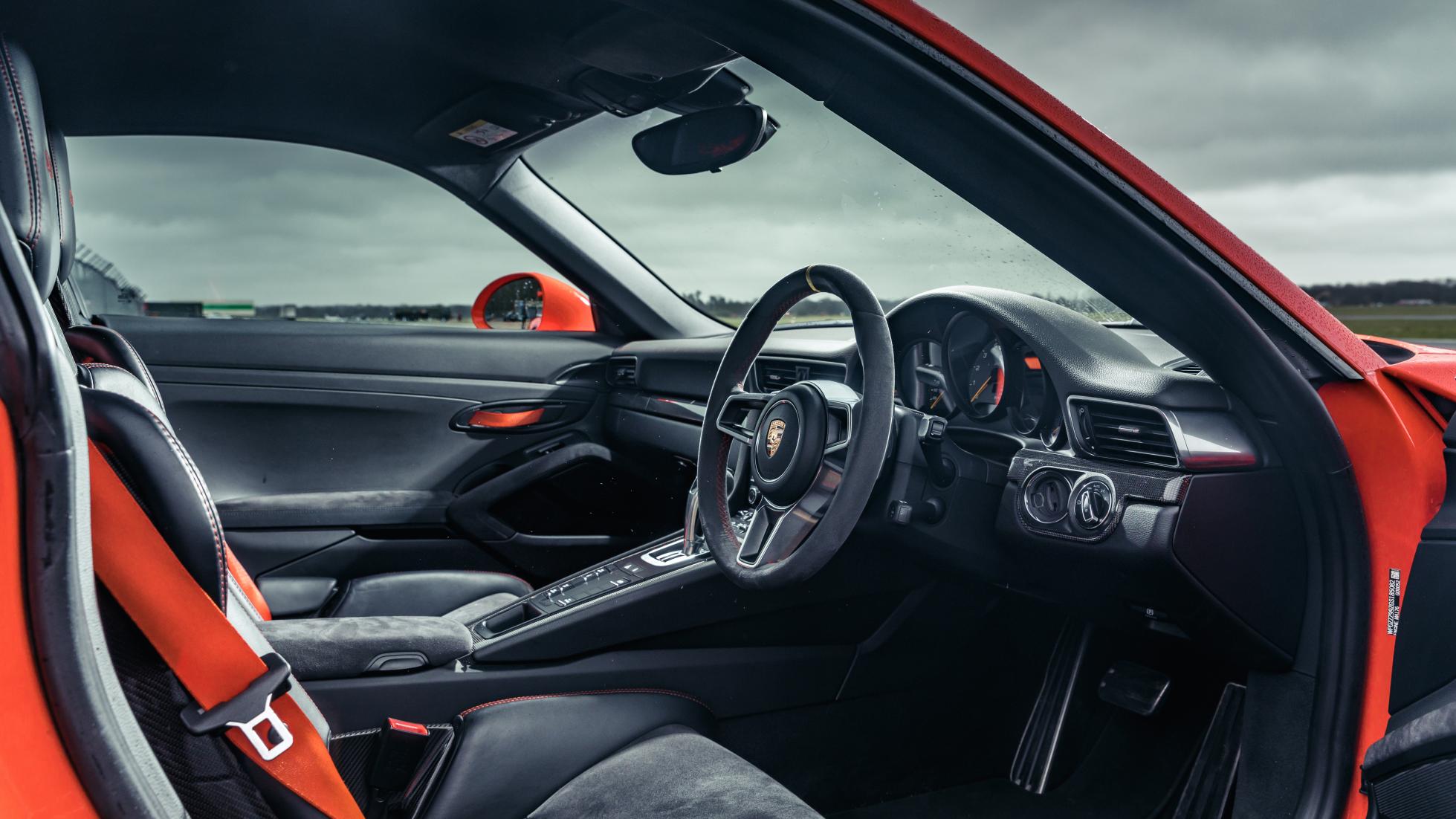
The GTS pushes a claimed 493hp, but at 1510kg, while lighter than the AMG, it feels much heavier. Being based on a physically bigger machine than the other two doesn’t help, nor does the higher seating position.
There’s an aloofness to the controls after the AMG, everything is light and lacking in a sense of connection. And it simply can’t work the same sticky Michelins the way the Mercedes can.
Once they’re fully up to temperature you can chase the throttle coming out of turns, but before that point this is one of the most tail-happy cars I’ve driven in years.
I should love that, but the fact is the GTS is a very spiky character. I don’t always trust it, even in the dry. In the wet I would normally choose to wear some kind of adult nappy before buckling up.
The traction control isn’t as sophisticated as the GT R’s, so you really need to switch it off and grow a pair. The motor is strong and in isolation I’d be telling you how impressive it is for a turbo unit in terms of response and high-rpm appetite, but it loses to the Mercedes in every single area. And the gearbox isn’t as quick either.
But what I find truly baffling about the BMW is that I actually prefer driving a standard M3 saloon to this exotic limited-numbers special. And that just shouldn’t be the case.
I can’t really pass judgement on the looks, I suppose it’s down to the individual. But if both the Porsche and the Mercedes carry about them a sense of real motorsport DNA, the BMW somehow seems a little, well, aftermarket. Judge a man by the size of his spoiler, and all that.
The BMW poses no threat to the Porsche whatsoever. Its 4.0 flat-six is the only atmospheric motor here and it screams most of the way to 9,000rpm. It is the lightest, has the most aggressive aerodynamic appendages and those rear tyres offer a 325 section to the road surface.
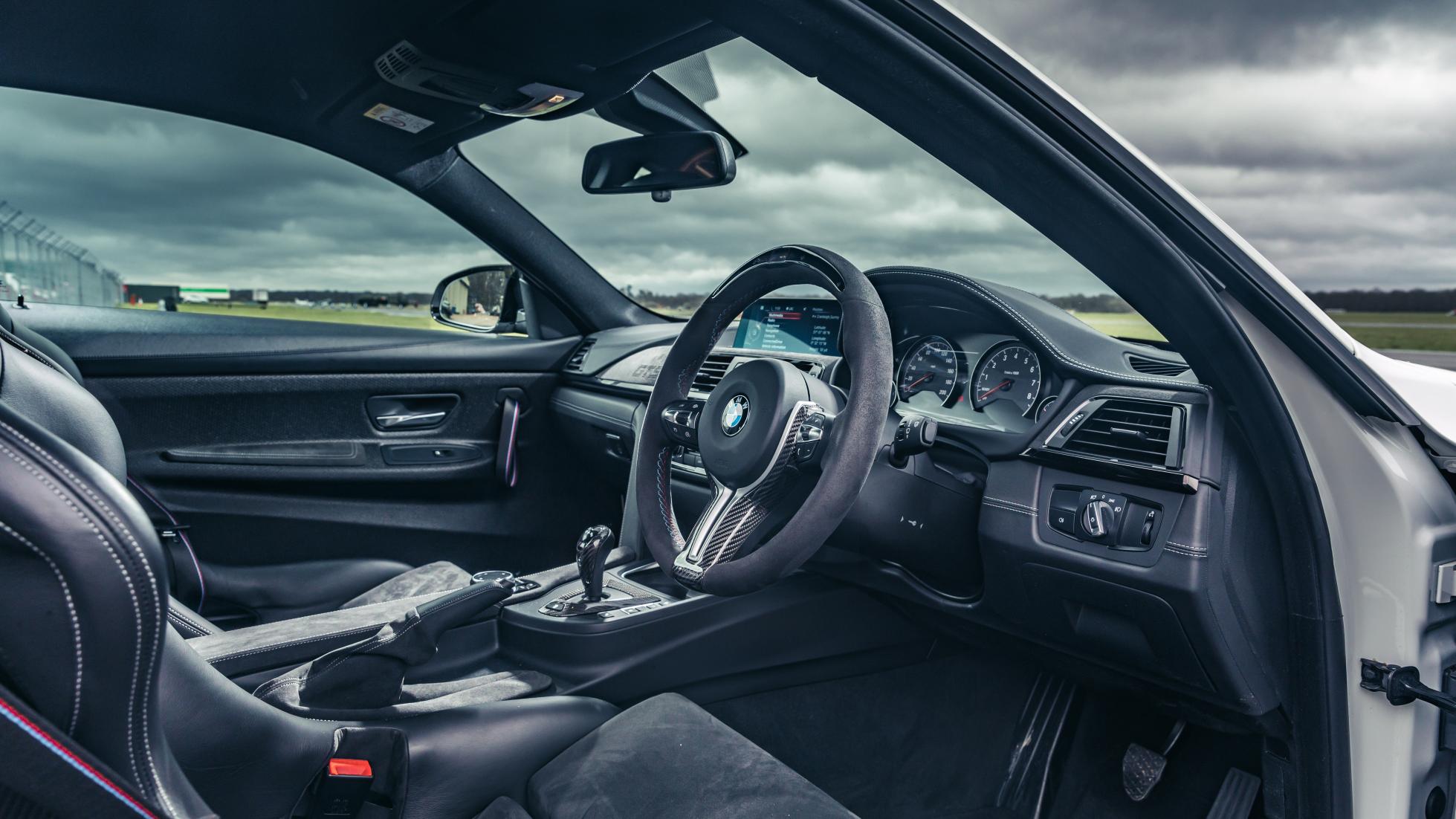
Turbochargers may bring massive mid-range shove, but the moment you open up the Porsche and ping an 8,500rpm gearchange you know that however hard Mercedes has tried with the GT R, it just can’t match the emotional appeal of this machine. It is one of the great, unsullied mechanical experiences.
The gearbox is the fastest, most race-like here. The soaring intake noise that changes pitch several times as it climbs towards the red line is the best here, the steering is also the best here – I think you might be getting some idea of how I feel about this car.
And it goes such a long way to fixing the problems that have plagued fast track-going 911s for decades. The clever combination of locking differential, rear-wheel steering and startlingly wide 265-section front tyres keep the understeer to a minimum. It doesn’t turn in quite as sharply as the Mercedes, but it can be bullied into an apex by trail-braking in a way no other fast 911 can. Traction is immense and the accuracy with which you can place the thing borders on the telepathic.
I’m pretty sure the Mercedes has it covered both in a straight line and for overall lap time, but that doesn’t tell the full story. Once you’re comfortable in the Porsche, once you’ve had the confidence to switch off the systems and started to push it harder, it reveals something I think no other performance car can match.
It gets up on its toes and genuinely feels like a racecar. It goads you into braking later and later, the motor keeps zinging into the upper-eights like you’re locked in a Supercup race.
It makes you perspire as it both challenges your ambitions and simultaneously flatters your inputs. There are faster cars for sale, but, for the sheer buzz of lapping a circuit, nothing can beat a 991 RS.
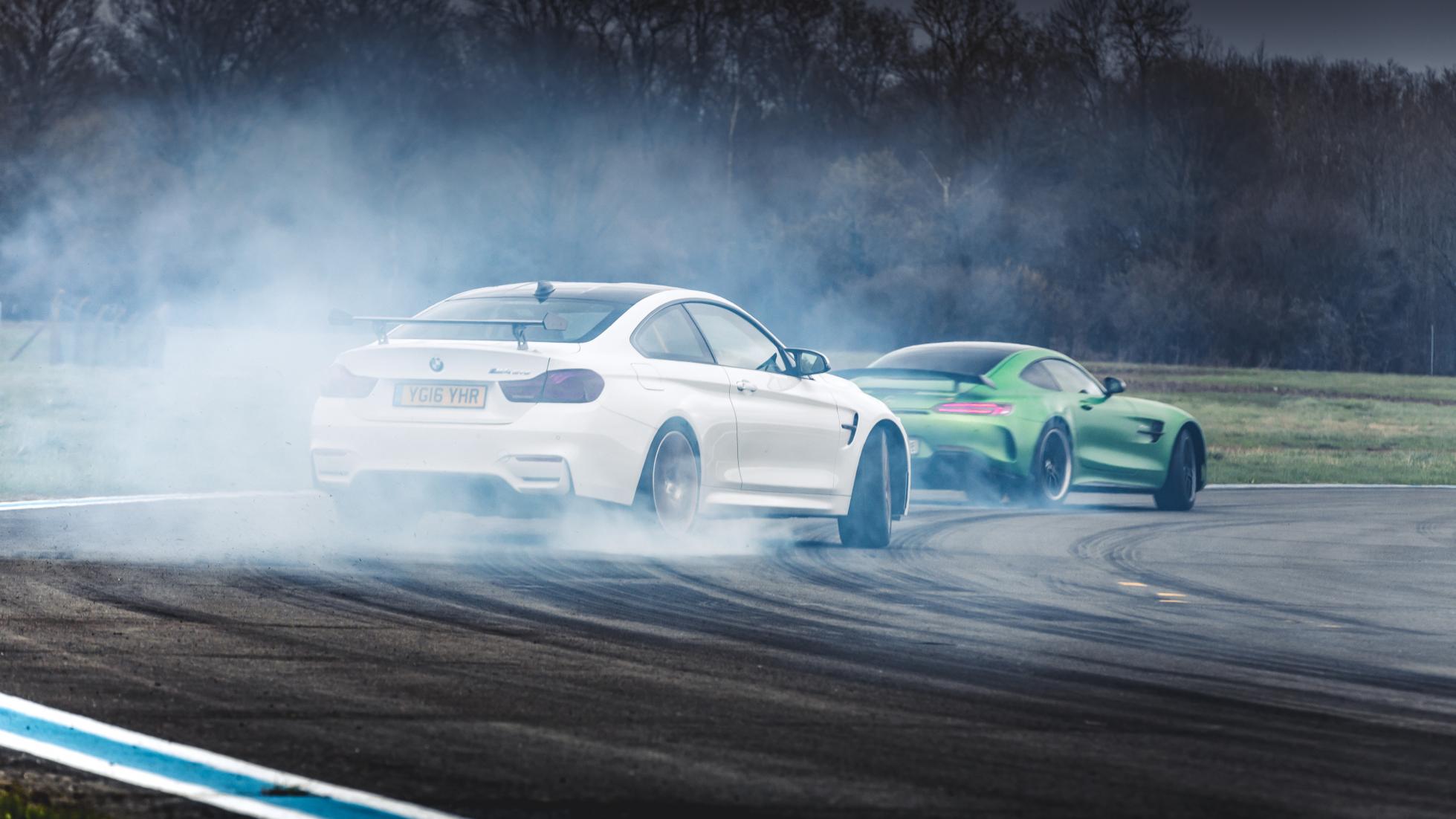
Certainly not the M4 GTS. On the road, the BMW actually makes a little more sense – well, as much sense as a 4 Series with a gold roll cage can make. The real surprise on the road is the GT R.
It carries no obvious compromise over the less exotic S – the ride is no worse and it didn’t have any rear seats to lose in the first place. It’s the most comfortable car of the three over a long distance, and the motor offers the most low-speed theatre with all those bangs and pops.
And the Porsche? Irritatingly good, given how keenly modified it has been for the purpose of fast lapping. It has a radio, navigation and you can see out of it. The main impediment to using one daily is the way pedestrians tend too walk into things while gawping at that rear wing.
No other car has come as close to rattling the RS as the new AMG. It’s a stunning achievement on two levels. First, it unlocks the talent we always knew was stored in the AMG GT, and second, it proves that something other than a 911 can straddle the circuit/road divide.
But Porsche is the master of this trade through decades of experience, and the RS offers a depth of both ability and personality that the Mercedes can’t quite live up to. It saddens me that so many of these brilliant driving devices lie garaged and commoditised awaiting some kind of financial reward because, when the petrol runs out, the RS will be considered one of the best driver’s cars ever produced.








